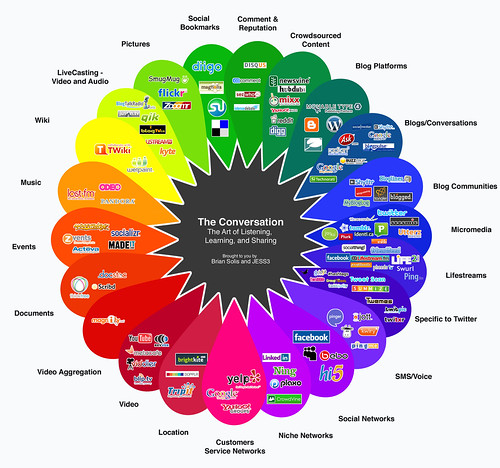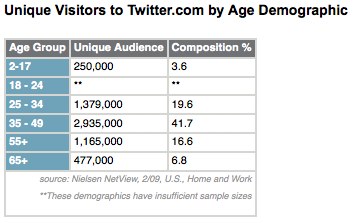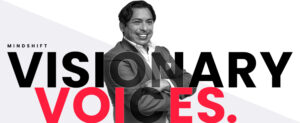
In a conversation recently with good friend Jeremiah Owyang, he encouraged and motivated me to finally publish this post…
Over the last decade, Social Media has slowly evolved not only as a new content publishing, sharing, and discovery medium, but more importantly as a peer-to-peer looking glass into the real world conversations that affect the perception, engagement, and overall direction of the brands we represent.
Socialized media didn’t invent “conversations,” it simply organized and amplified them.
My foray into the social web and D2C (direct to customer) engagement as a complement to traditional media harks back to the early days of bulletin boards, which evolved into communities such as Yahoo Groups as well as the new era of HTML-efficient enthusiasts who created influential websites that shared news, thoughts, rants, and observations related to their passions and interests (the precursor to blogs).
Here were are, over a decade later, and mainstream brands are finally starting to pay attention. We’re waking up to a new world of opportunity that no less changes everything about how, what, and to whom we communicate.
Blogs paved the way for individual authority.
MySpace and Facebook carried the baton and created an important paradigm of visible tastemakers and trendsetters.
And now Twitter is forcing the next level of reinvention for how we identify, track and respond to online conversations that are pertinent to brand perception and resonance. Twitter is the catalyst that will spark the change for how brands truly engage across the Conversation Prism a.k.a. The Social Web.

Reviewing Nielsen’s analysis, Twitter growth has skyrocketed by almost 1,400% in just one year and projections predict similar jumps ahead.

Perhaps most interestingly, Nielson documented something that I’ve been observing for quite some time, Twitter’s largest adoption is stemming from adults, not primarily via teens or college students as you might expect. In February the largest age group on Twitter was 35-49; with nearly 3 million unique visitors, comprising almost 42 percent of the site’s audience.

In a recent post regarding Nielsen research, this is similar to the demographic that is driving Facebook’s growth as well. While, Facebook started out as a service for university students but now almost one third of its global audience is aged 35-49 years of age and almost one quarter is over 50 years old.

For a detailed view of the demographics defining individual communities, please read, “Humanizing Social Networks.”
Recently, I wrote about how to track brands on Twitter and also measure their effectiveness in order to base your listening and response strategies across every affected division from public relations to customer service to product development to HR and finance.
SocialRadar recently released the top Twitter Brands for February 2009 based on overall Tweets measured by day (green) and over the course of the month (blue).

While Twitter is the shiny catalyst for corporate introspection, the social web is one big stream that requires listening, empathy, and also engagement and response.
InsideFacebook recently shared a great story of how brands can cultivate communities on Facebook using Coca-Cola as a leading example. Did you know that the Coca-Cola fan page is the 2nd most popular Page on all of Facebook with over 3.3 million fans, second only to Barack Obama? Did you know that the fan page was actually created by true fans and not the Coca-Cola marketing department?
In a recent AdAge story, the two founders, Dusty Sorg and Michael Jedrzejewski, shared their story of how Coca-Cola asked to partner with them to manage the Page in a move that showed a humble and effective approach to social media.

For guidance and ideas for other forms of corporate sCRM, visit Peter Kim’s blog.
Establishing the Conversation Index
It’s not just about the networks we KNOW, it’s also about the communities we don’t know – this is the source of inspiration behind the Conversation Prism. Listening to the dialog related to specific keywords within every community, initially, will help us define and chart an accurate social map that pinpoints the exact communities that require our attention, the volume and frequency of relevant conversations, and the tonality and reach of those conversations within their respective networks.
This is what I call establishing the “Conversation Index” so that you have something to benchmark against moving forward.
Tools such as BuzzGain, Radian6, Trackur, PeopleBrowsr, SocialRadar (and many, many others) are helping brands monitor and steer dialog to ensure online reputation management (ORM) in and around Twitter, while also presenting individual, real world opportunities for building relationships with the very people who contribute to your brand essence. Many tools also have integrated call center-like functionality to measure, route and manage conversations to streamline and improve the process of engagement along with influencer satisfaction.
Online discussions, rants, and observations are either alarming brand managers or fooling them into a trap of under estimation. Either way, the statusphere, blogopsphere, communities and networks, and the social web has ushered in a new genre of Social Customer Relationship Management (sCRM) that answers questions, solves problems, establishes authority, and builds relationships and loyalty, one tweet, blog post, update, and “like,” at a time.
Conversations are flying in Twitter Time, communities are broade”Ning,” friends are feeding, and brands are Facebooking their customers.
While only a glimpse of what will transpire over the next several years, Twitter is humanizing the strategies and the tactics for engagement with every 140 character tweet – or 120 if you want to spark retweets (RTs).
At the very least, simply listening directly in each relevant network is a great way to start:
– Try blogsearch.google.com for relevant blog posts.
– BackType to reveal the conversations that exist about you in the comments section of blog posts.
– Search.Twitter.com for related tweets or Advanced Twitter Search to measure conversations by timeframe, sentiment, location, or individuals.
– FriendFeed.com for comments about your brand from various social networks aggregated in one stream.
– Ning, Google, Yahoo, and Facebook Groups to see what others have built around your company or product.
This isn’t something you can jump into without first reading the instructions. Your failure to first listen, empathize, and formulate a genuine strategy that inspires the community to grow the community will unfold publicly and damage the very attributes you wished to promote.
This is about becoming the customer you want to embrace.
Tools aside, it’s your role and actions in the engagement equation of Social CRM that serves as the cadence to future dialog and ultimately shapes brand personality and allegiance with every beat of your social rhythm.
Helpful Posts:
– The Human Network = The Social Economy
– In the Statusphere, ADD Creates Opportunities for Collaboration and Education
– Humanizing Social Networks, Revealing the People Powering Social Media
– Tracking Brands on Twitter to Improve How You Listen and Engage
– Make Tweet Love – Top Tips for Building Twitter Relationships
– Twitter Tools for Communication and Community Professionals
– The Social Revolution is Our Industrial Revolution
– The State of Social Media
– Free ebook: The Essential Guide to Social Media
– Free ebook: Customer Service, The Art of Listening and Engagement Through Social Media
Connect with me on:
Twitter, LinkedIn, Tumblr, or Facebook
—
ENGAGE!
—
Now available:







Brian, this is terrific insight! The whole notion of Social CRM is very exciting. What I’m wondering is when the traditional CRM market is really going to integrate all the tools to provide a consolidated view into the customer’s new world of engagement.
Additionally, we need to consider how to re-train the customer facing people to know how to leverage these tools in the most effective way.
Hi Brian,
Thank you so much for shining light on the possibilites that exist with the integration of these two key areas.
I’ve been writing, blogging, presenting and talking about this for about 18 months, and it is so good to see the interest growing like this. You and Jeremiah are bringing it to even more people to start to explore, and hopefully we’ll begin seeing the vendor community move in the directions necessary to really bring the kind of benefit we need as both companies, and customers.
Thanks again!
@BrentLeary
Brian,
I so enjoy your posts, and this one is no exception. Our community and team have been discussing social CRM in great depth for a while now, for so many of the reasons you’ve eloquently outlined.
“This is about becoming the customer you want to embrace.”
It’s not enough to listen. It’s not even enough to engage. It’s really about fostering your *own* participation and contributions to the community you wish to tap. It’s authenticity not in its buzzword form, but in the truest sense of practicing what you preach.
It’s not about mechanizing interactions, it’s finding ways to streamline the process and leaving the door wide open for the human elements to emerge.
Great to finally say a brief hello at SXSW, and hope next time we can chat more.
Cheers,
Amber Naslund
Director of Community | Radian6
@AmberCadabra
Hey Brian,
Your post covers so many community building basics. Listening, creating a strategy & responding.
Techrigy SM2 allows our customers to set up searches for keywords & the tool identifies the domains where the conversations are taking place. It efficiently points to the pockets of interaction on the web. It also provides the volume, frequency of conversations along with automated sentiment & tone.
And as you say, it's what's done with this information is what's important. Engagement is key in customer relationship management. We're only on the tip of what's to come.
I look forward to seeing you at NewComm Forums!
Connie
Community Strategist, Techrigy
@cbensen
“Your failure to first listen, empathize, and formulate a genuine strategy that inspires the community to grow the community will unfold publicly and damage the very attributes you wished to promote.”
This is so important!
Bravo to you on writing such a comprehensive post. It should be required reading.
it’s crazy when I saw those reults on Twitter growing to 1,300% and that the most interesting is the age group of middle age adults controlling Twitter.
Hi Brian,
Thank you for the insights. I was so intrigued by the socio-demographics that you posted – about the leading drivers of Twitter as the middle age adults – that I sent out a poll to try to gather similar data about Twitter users in Singapore.
As a country that ought to rank as one of the most plugged into cyberspace in the world, we still have some way to go before PR2.0 concepts start to take hold. But there lies the opportunity and potential for us as well. We’ve an emerging generation that are intimately conversant with the Web and notions of sCRM should be a norm in the future, given that Singapore is a service-oriented economy as well.
I also thought it’s immensely true, when you said that the online conversation isn’t just about the networks we know, but also the networks that we don’t know exist, but are out there. But being so new to this, I can’t help but feel overwhelmed by where to start listening, especially from a government point of view, which is essentially where I am plugged into.
Unlike the corporate side, any government in the world will have its own bureaucracies to handle, which will limit somewhat how freely it can ‘move’ in the new Web 2.0 environment. But we are taking steps forward, and I am so looking forward to continue building my vocabulary in this area and go back and join my other like-minded colleagues to effect positive change going forward.
Keep in touch!
Thanks for the commentary. You get a stumbleupon vote from me and a retweet. As I heard the other day, ‘There is a difference in being listen to and being heard. Which is it for your voice?’ Many heard what you said with this article.
Terric post Brian. Your continued thought leadership on this topic is important and inspiring.
Especially critical in your post is the notion that engagement begins with listening. In my practice, so often a client will want to jump in with both feet before even attaining a modicum of understanding that the conversation is already in progress.
Social CRM is, in many ways, about having the sensitivity to understand that “managing” a “relationship” in a social media context is about recognizing the right each of us has to our own viewpoints and opinions.
Companies (and PR agents) that can’t overcome the absolute rightness of their viewpoint within their niche/product/category are doomed to blunder around the social media landscape stepping on toes left, right and center.
Thanks for pushing this conversation forward.
Alex Hillinger | Goodchemistry.com
Some smart stuff in here, but Give me a break. commending Coke with a straight face for letting these fans still run the page?? yeah, its certainly strategic, but not “humble”!!!, its clever, and the clear move to make to avoid negative PR, its not humble(!) by any freekin means, and its a bit heinously irresponsible and just plain sycophantically bizarre to compliment this move so unskeptically…
Very interesting post Brian.
Steve Dodd raised a good point about when CRM will integrate. I think before we go bringing all this info into CRM systems we need to be clear that it’s going to add value. Whilst CRM systems like SugarCRM are now business platforms, companies need to be careful they don’t start bringing in millions of bits of useless data.